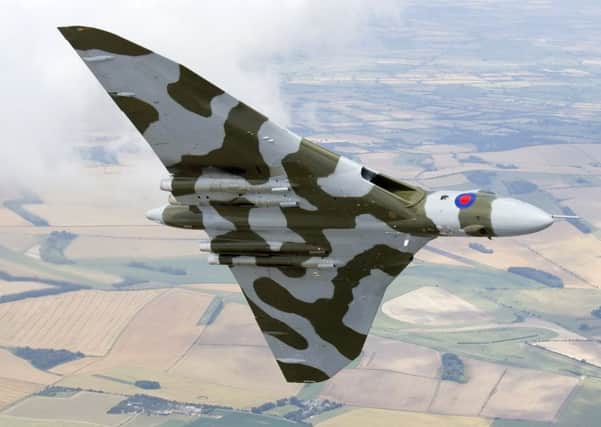Final flying dates for last Vulcan revealed


The iconic aircraft, based at Doncaster’s Robin Hood Airport is due to finally bow out with a spectacular nationwide sortie on October 10-11.
But fans of XH558 are being warned to stay away from the airport to catch a glimpse of the plane over crowd safety fears.
Advertisement
Hide AdAdvertisement
Hide AdOwners Vulcan To The Sky Trust said: “A celebratory national tour, XH558’s most ambitious ever, is being planned for Saturday 10th and Sunday 11th October.
“It will bring her flying career to a spectacular close in two sorties to cover the north and south, giving as many people as possible a final opportunity to see the dramatic sight of a Vulcan in the air.
“In saluting that remarkable period of intense British innovation that XH558 so powerfully embodies, the tour will include fly-pasts of several sites famous for British aviation excellence, as well as other well-known locations chosen to provide good vantage points for supporters.”
It added that the flight plan and viewing options on the ground are yet to be confirmed and urged supporters to keep up to date with Facebook and Twitter for full details.
Advertisement
Hide AdAdvertisement
Hide AdHowever, fans have been urged to stay away from Doncaster as the plane prepares to undertake its last few flights before being retired from the skies.
A statement issued by VTTS said: “The roads, villages and availability of parking around the perimeter of Robin Hood Airport are very restricted. As the final few flights approach, we must warn you that the chances of seeing XH558 take-off and land will be slim. There are no plans for any displays or repeated circuits over the airfield and the aircraft will come straight-in to land on her return.
“We wish to bring the aircraft to you – as much as possible, so please plan to go to one of the published locations on the final tour when they are announced, or one of the existing display venues, rather than come to Robin Hood.
“As the last few flight dates approach, spectator interest around the airport at Doncaster is reaching new heights, with huge numbers already being seen on surrounding roads. The police and emergency services, local authority and the airport are very much aware of growing issues. There is great risk of severe restrictions being imposed on our last few days of flight operations. We do need to minimise the risk of enforced flight cancellations on the grounds of public safety.
Advertisement
Hide AdAdvertisement
Hide Ad“We would request all our supporters try to view XH558 from another vantage point along a notified flight-path or display venue. Please do not travel to Doncaster.”
The iconic aircraft is currently enjoying one long summer of flypasts and displays with thousands turning out to see her.
But aviation enthusiats only have a few more chances to see the plane before it is grounded forever.
Dr Robert Pleming, chief executive of the Vulcan To The Sky Trust, which maintains the aircraft and which first returned her to flight in 2007, said: “If you don’t see her this season, there will be no more opportunities to hear a Vulcan’s spine-tingling howl as she climbs high into the sky for another memorable display or to see her rolling onto her side to reveal her giant delta silhouette.”
Advertisement
Hide AdAdvertisement
Hide AdBut while Vulcan XH558 may no longer be soaring gracefully through the skies, she will stay in Doncaster – as the centrepiece of a new museum celebrating her heritage as well as her life and times, in the former RAF Finningley hangar where she sat in readiness for fighting and bombing during the 1960s and 70s.
Dr Pleming said: “We have set out from the start to create a lasting legacy for the Vulcan by planning for the day when the aircraft will have to cease flying.”
Vulcan To The Sky chiefs have had to make the tough decision that this year will be her last - for safety and technical reasons.
Dr Pleming said that while the aircraft, affectionately dubbed the ‘tin triangle’ was still safe, the age of her airframe, engines and a growing difficulty to source skilled engineers to keep her airborne were all factors taken into account when deciding her fate. It also costs £2 million a year to keep the plane in the air.